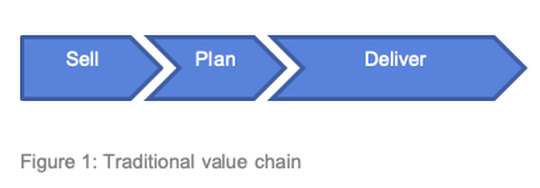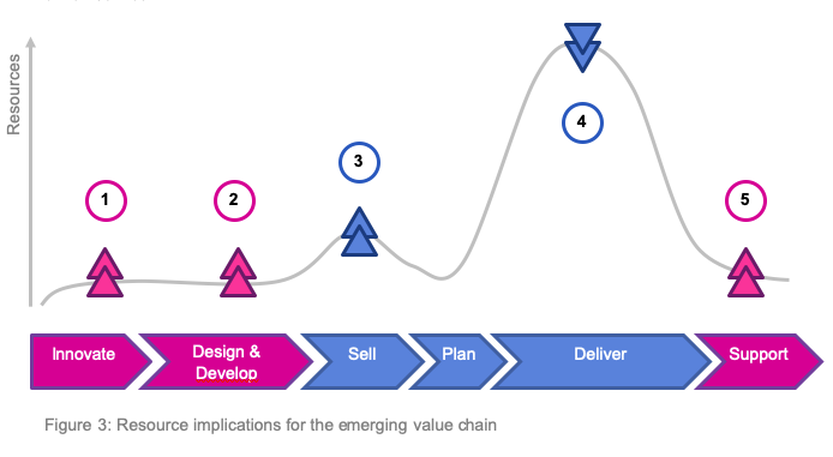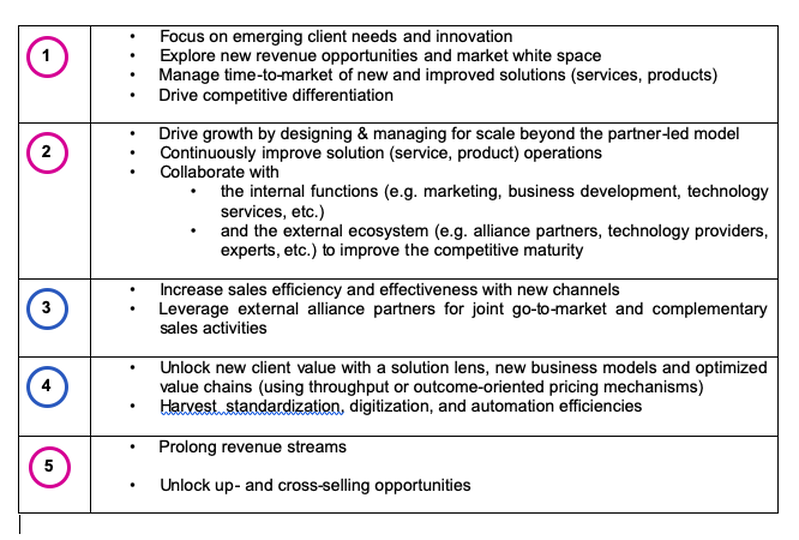An article by Sebastian Hartmann, originally published in LegalBusinessWorld No.1, 2020
The world of professional services has begun to change dramatically over the past decade – and many of those changes bear strong commonalities across lawyers, consultants, accountants, marketing or technology experts. Aside from the fact that accountants or tax advisors are leading the charts about jobs endangered by robots and artificial intelligence (but are still far from disappearing), we can observe that in general, the traditional knowledge advantage of the professions is increasingly fading. And that the way they deliver their expertise is evolving. Technology and more data-driven new solutions or entire firms are changing the market dynamics and traditional competitive landscape. But most important clients are increasingly demanding much clearer value propositions and measurable, tangible solutions.
The ongoing discussion around moving towards alternative throughput- or outcome-based and more value-oriented pricing is just one indicator of this change in the nature of demand. While demand trends are clearly led by both larger clients and newer startups, it is noticeably spreading across all client segments.
Clients want to understand, see and measure what they are buying – and while it is being delivered.
Legal, consulting and accounting firms are responding by adjusting not only their pricing but their entire business models. So, what exactly is happening as we move away from time and material thinking, billable hours and utilization? While one could argue that delivering a service on a fixed fee or gain share model does not necessarily change the world or the business model, we can clearly see noticeable effects on the way firms operate today: Committing to a fixed fee means that lawyers or consultants need to deliver reliably. So they take on more risks and need to deliver efficiently and effectively in order to be profitable. This requires much more systematic management of the delivery process – the so-called „value chain“.
Demonstrating or showcasing the desired solution and reliably managing for outcomes is the new permission to play.
Most firms are adapting by leveraging technology to drive consistency across client engagements. They introduce better collaboration tools, design partial or even end-to-end workflows, and deliver their results digitally. The use of technology allows them to manage their processes and resources more systematically, control risks or even design for a certain level of quality.
Apart from obvious efficiency implications, technology, more importantly, allows firms to support their professionals and clients throughout their interactions and collaboration, e.g. collecting and leveraging collective insights, providing best practices on demand and educating both professionals and clients.
This next-generation delivery requires a much more systematic architecture of methods, tools, insights, processes and resources – without becoming too rigid, but instead smarter, reliable and still customized. This extends the classic and rather simple value chain of professional services from a management perspective:

The next-generation value chain for legal, consulting, accounting and marketing services looks very different. Most notably it is getting much longer – with new elements being added
- upstream, with activities like innovation, design, solution management, etc.,
- and downstream, with support, after-sales service, maintenance, updates, etc.,
- as well as on an underlying operations and management layer.

Not surprisingly, this up- and downstream extension of the value chain, the decreasing importance of the traditional billable hour and the rising need to manage this new complexity, drives significant operating model implications. Different processes, capabilities, and roles need to work together now. We have been able to observe the recruitment and announcements of new roles, such as legal designers or engineers, solution managers, etc., for a while now. Partnerships with technology providers are forming and need to be managed – not just client by client but on an ongoing basis. The translation of product management into the world of professional services creates a new approach to growing and managing the business. Nonetheless, many firms still struggle with the long-term implications, which question their established operating models, their career paths and incentive schemes – and, of course, their financial model as well as the known management and leadership playbooks.
Schematically adding a resource curve on top of this value chain picture illustrates this dramatic change to the operations of an emerging next-generation law firm, consulting practice or any other knowledge-driven service firm:

So, how does this resource profile work out financially for the firm? Let’s take a look at some exemplary value levers, which are calling for execution along each step of this emerging value chain:

It is time for Professional Services to become much more professional about running their own business.
And exactly therein lies the opportunity: All firms, which regard technology and non-billable work as unfortunate necessities or increasing costs, are doomed in a „race to the bottom“ – both in terms of growth and profitability.
Those firms, which will embrace and drive this professionalization of their value chain, will thrive. They will seize the emerging market opportunities to move towards stronger client centricity, new solutions and ultimately new business models, such as smarter managed services, subscription-based services, knowledge- or even software-as-a-service engagements. All of these increasingly popular and much more digital business models, leverage technology and data to drive efficiencies and additional value. The required new activities and resources are not „overhead“ or „non-billable back-office work“, but drivers of scalability, growth and profitability.
Looking forward to your thoughts and feedback in the comments!